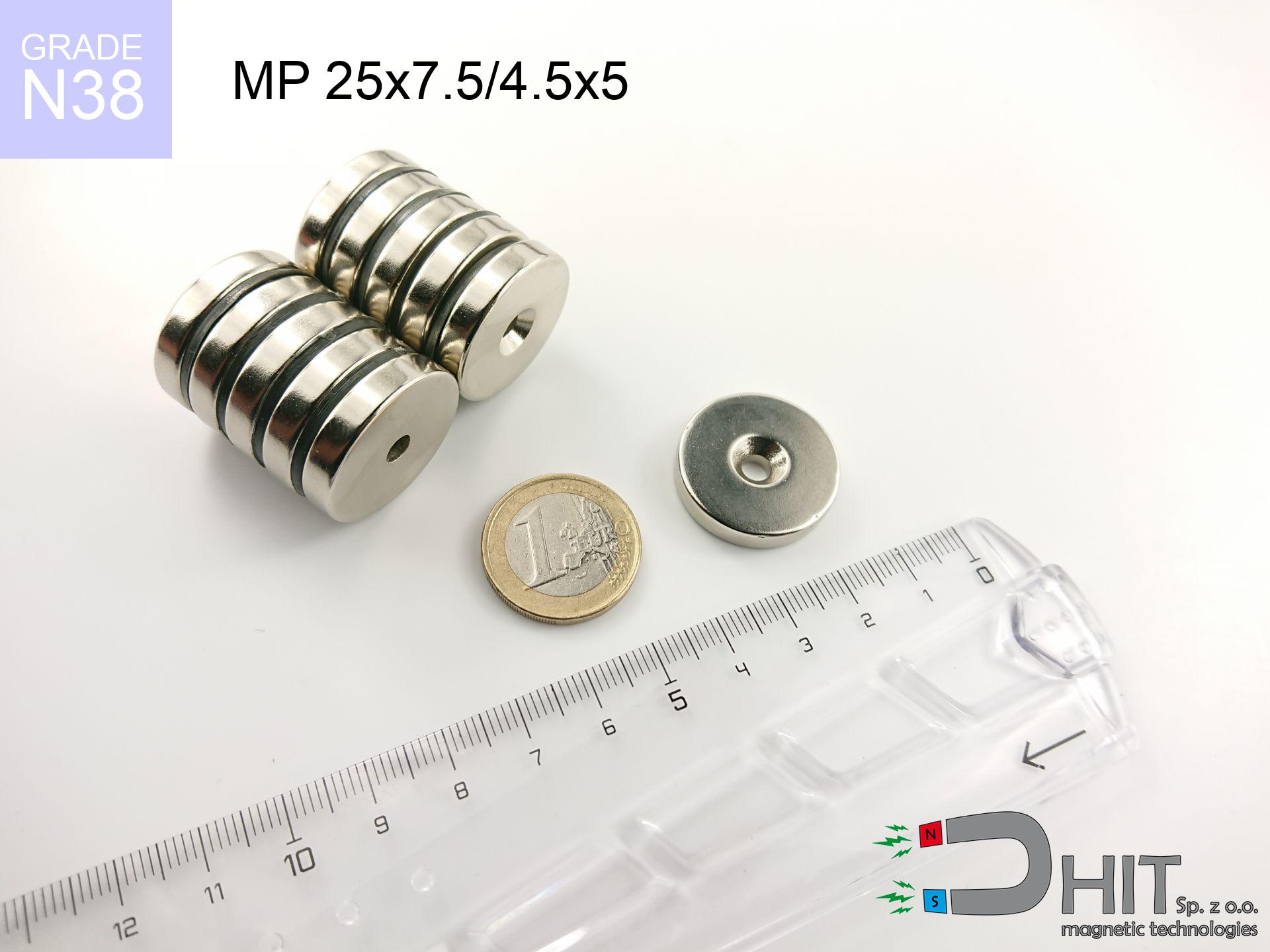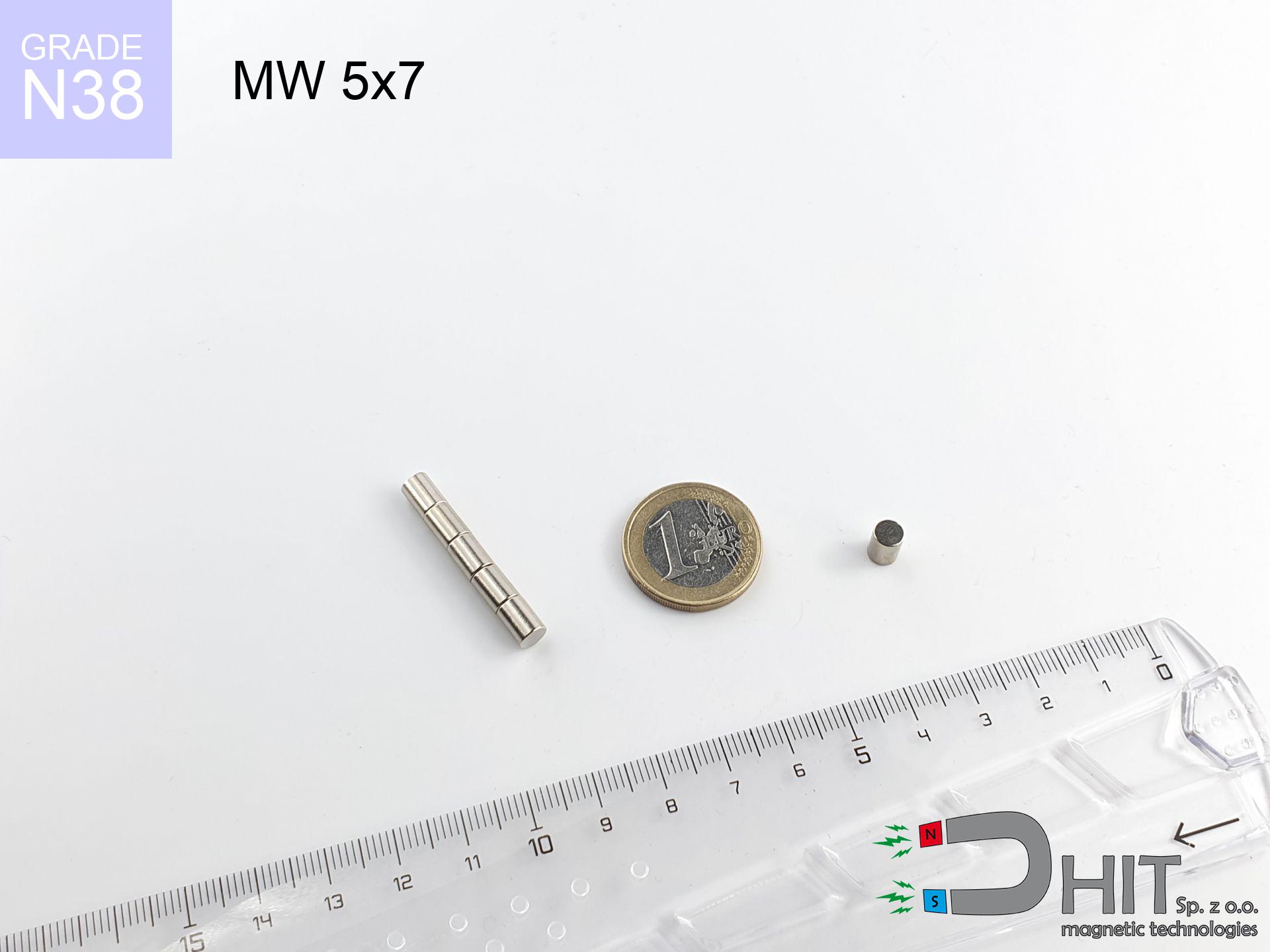MP 25x7.5/4.5x5 / N38 - neodymium magnet
ring magnet
catalog number 030194
GTIN: 5906301812111
external diameter Ø
25
mm [±0,1 mm]
internal diameter Ø
7.5/4.5
mm [±0,1 mm]
height
5
mm [±0,1 mm]
magnetizing direction
↑ axial
capacity ~
1.71 kg / 16.77 N
magnetic induction ~
333.60 mT / 3,336 Gs
max. temperature
≤ 80
°C
catalog number 030194
GTIN: 5906301812111
external diameter Ø
25 mm [±0,1 mm]
internal diameter Ø
7.5/4.5 mm [±0,1 mm]
height
5 mm [±0,1 mm]
magnetizing direction
↑ axial
capacity ~
1.71 kg / 16.77 N
magnetic induction ~
333.60 mT / 3,336 Gs
max. temperature
≤ 80 °C
8.00 ZŁ gross price (including VAT) / pcs +
6.50 ZŁ net price + 23% VAT / pcs
bulk discounts:
need more quantity?Don't know what to buy?
Call us tel: +48 22 499 98 98 or contact us through form on our website. You can check the power as well as the appearance of neodymium magnets in our magnetic calculator magnetic mass calculator
Orders placed by 2:00 PM will be shipped on the same business day.
Specification: ring magnet 25x7.5/4.5x5 / N38 ↑ axial
Magnetic properties of the material N38
Physical properties of sintered neodymium magnets Nd2Fe14B
Shopping tips
Advantages and disadvantages of neodymium magnets NdFeB.
Apart from immense power, neodymium magnets have the following advantages:
- They do not lose their power (of the magnet). After approximately 10 years, their power decreases by only ~1% (theoretically),
- They protect against demagnetization caused by external magnetic sources extremely well,
- In other words, thanks to the glossy nickel, gold, or silver finish, the element gains an visually attractive appearance,
- They possess very high magnetic induction on the surface of the magnet,
- By using an appropriate combination of materials, they can achieve high thermal resistance, allowing them to operate at temperatures up to 230°C and above...
- Due to the option of accurate forming and adaptation to individual needs – neodymium magnets can be produced in various forms and dimensions, which amplifies their universality in usage.
- Wide application in modern technologies – are used in HDD drives, electric drive mechanisms, medical devices or various technologically advanced devices.
Disadvantages of neodymium magnets:
- They are prone to breaking as they are fragile when subjected to a strong impact. If the magnets are exposed to impacts, it is suggested using magnets in a protective case. The steel housing in the form of a holder protects the magnet from impacts and also increases its overall strength,
- They lose power at high temperatures. Most neodymium magnets experience permanent loss of strength when heated above 80°C (depending on the form and height). However, we also offer special magnets with high temperature resistance, up to 230°C,
- Due to their susceptibility to corrosion in a humid environment, we suggest using waterproof magnets made of rubber, plastic, or other moisture-resistant materials when using them outdoors,
- Limited ability to create threads or complex shapes in the magnet - the use of a housing is recommended - magnetic holder
- Potential hazard to health from tiny fragments of magnets can be dangerous, when accidentally ingested, which is crucial in the context of children's health. Furthermore, tiny parts of these devices are able to complicate diagnosis when they are in the body.
Exercise Caution with Neodymium Magnets
Avoid contact with neodymium magnets if you have a nickel allergy.
Studies show a small percentage of people have allergies to certain metals, including nickel. An allergic reaction often manifests as skin redness and rash. If you have a nickel allergy, try wearing gloves or avoid direct contact with nickel-plated neodymium magnets.
Keep neodymium magnets away from TV, wallet, and computer HDD.
Strong magnetic fields emitted by neodymium magnets can damage magnetic storage media such as floppy disks, credit cards, magnetic ID cards, cassette tapes, video tapes, or other devices. In addition, they can damage televisions, VCRs, computer monitors, and CRT displays. You should especially avoid placing neodymium magnets near electronic devices.
Keep neodymium magnets away from people with pacemakers.
Neodymium magnets generate strong magnetic fields. As a result, they interfere with the operation of a pacemaker. This happens because such devices have a function to deactivate them in a magnetic field.
Magnets will attract to each other, so remember not to allow them to pinch together without control or place your fingers in their path.
Magnets may crack or crumble with uncontrolled connecting to each other. You can't approach them to each other. At a distance less than 10 cm you should hold them extremely strongly.
Under no circumstances should neodymium magnets be brought close to GPS and smartphones.
Magnetic fields can interfere with compasses and magnetometers used in aviation and maritime navigation, as well as internal compasses of smartphones and GPS devices. There are neodymium magnets in every smartphone, for example, in the microphone and speakers.
It is important to keep neodymium magnets out of reach from youngest children.
Remember that neodymium magnets are not toys. Be cautious and make sure no child plays with them. In the case of swallowing multiple magnets simultaneously, they can attract to each other through the intestinal walls. In the worst case scenario, this can lead to death.
Magnets made of neodymium are noted for their fragility, which can cause them to become damaged.
Neodymium magnetic are highly fragile, and by joining them in an uncontrolled manner, they will break. Neodymium magnets are made of metal and coated with a shiny nickel surface, but they are not as hard as steel. At the moment of collision between the magnets, sharp metal fragments can be dispersed in different directions.
Neodymium magnets are the strongest, most remarkable magnets on the planet, and the surprising force between them can surprise you at first.
Please review the information on how to handle neodymium magnets and avoid significant harm to your body, as well as prevent unintentional disruption to the magnets.
Neodymium magnets can become demagnetized at high temperatures.
Although magnets have shown to retain their effectiveness up to 80°C or 175°F, this temperature may vary depending on the type of material, shape, and intended use of the magnet.
Dust and powder from neodymium magnets are highly flammable.
Avoid drilling or mechanical processing of neodymium magnets. Once crushed into fine powder or dust, this material becomes highly flammable.
In order to show why neodymium magnets are so dangerous, see the article - How very dangerous are very powerful neodymium magnets?.




![magnetic holder with hook 42x9x46 [M6] / N38 ↑ axial magnetic holder with hook 42x9x46 [M6] / N38 ↑ axial](https://cdn3.dhit.pl/graphics/products/umh-42x9x46-m6-vat.jpg)

![magnetic accessories szekla [M10] magnetic accessories szekla [M10]](https://cdn3.dhit.pl/graphics/products/am-szekla-m10-zeh.jpg)


